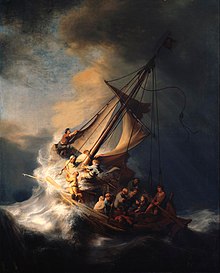Jacques Specx

Jacques Specx (Dutch pronunciation: [ˈʒɑk ˈspɛks]; Dordrecht, 1585 - Amsterdam, 22 July 1652) was a Dutch merchant, who founded the trade on Japan and Korea in 1609.[1][2] Jacques Specx received the support of William Adams to obtain extensive trading rights from the Shogun Tokugawa Ieyasu on August 24, 1609, which allowed him to establish a trading factory in Hirado on September 20, 1609. He was the interim governor in Batavia between 1629 - 1632. There his daughter Saartje Specx was involved in a scandal. Back home in Holland Specx became an art-collector.
The Dutch, who, rather than "Nanban" were called "Kōmō" (Jp:紅毛, lit. "Red Hair") by the Japanese, first arrived in Japan in 1600, on board the Liefde.
In 1605, two of the Liefde's crew were sent to Pattani by Tokugawa Ieyasu, to invite Dutch trade to Japan. The head of the Pattani Dutch trading post, Victor Sprinckel, refused on the ground that he was too busy dealing with Portuguese opposition in Southeast Asia.
1609 mission to Japan
Jacques Specx sailed on a fleet of eleven ships that left Texel in 1607 under the command of Pieter Willemsz Verhoeff. After arriving in Bantam two ships which were dispatched to establish the first official trade relations between the Netherlands and Japan.[3]

The two ships Specx commanded were De Griffioen (the "Griffin", 19 cannons) and Roode Leeuw met Pijlen (the "Red lion with arrows", 400 tons, 26 cannons). The ships arrived in Japan on July 2, 1609.[4]
Among the crews were the Chief merchants Abraham van den Broeck and Nicolaas Puyck and the under-merchant Jaques Specx.
The exact composition of the delegation is uncertain; but it has been established that van den Broeck and Puyck traveled to the Shogunal Court, and Melchior van Santvoort acted as the mission's interpreter. Santevoort had arrived a few years earlier aboard the Dutch ship De Liefde. He had established himself as a merchant in Nagasaki.

The Shogun granted the Dutch the access to all ports in Japan, and confirmed this in an act of safe-conduct, stamped with his red seal. (Inv.nr.1a.).
In September 1609 the ship's Council decided to hire a house on Hirado island (west of the southern main island Kiushu). Jacques Specx became the first "Opperhoofd" (Chief) of the new Company's factory.[5]
In 1610, Specx sent a ship to Korea.[6]
Gallery
Specx owned five paintings by Rembrandt.[7]
Notes
- ^ http://www.city.hirado.nagasaki.jp/english/history/historycontent.htm
- ^ http://www.koreanhistoryproject.org/Ket/C14/E1403.htm
- ^ http://www.vocsite.nl/geschiedenis/personalia/specx.html
- ^ Opstall, M.E. van (1972) De reis van de vloot van Pieter Willemsz Verhoeff naar Azie 1607 - 1612 (The voyage of the fleet of Pieter Willemsz Verhoeff to Asia 1607 - 1612), p. 141.
- ^ English summary of the inventory of the archives of the Dutch factory in Japan, 1609-1860
- ^ http://www.hendrick-hamel.henny-savenije.pe.kr/holland4.htm
- ^ http://traumwerk.stanford.edu/philolog/2005/12/
References
- Template:Nl icon de Winter, Michiel. (2006). "VOC in Japan: Betrekkingen tussen Hollanders en Japanners in de Edo-periode, tussen 1602-1795" ("VOC in Japan: Relations between the Dutch and Japanese in the Edo-period, between 1602-1795").
